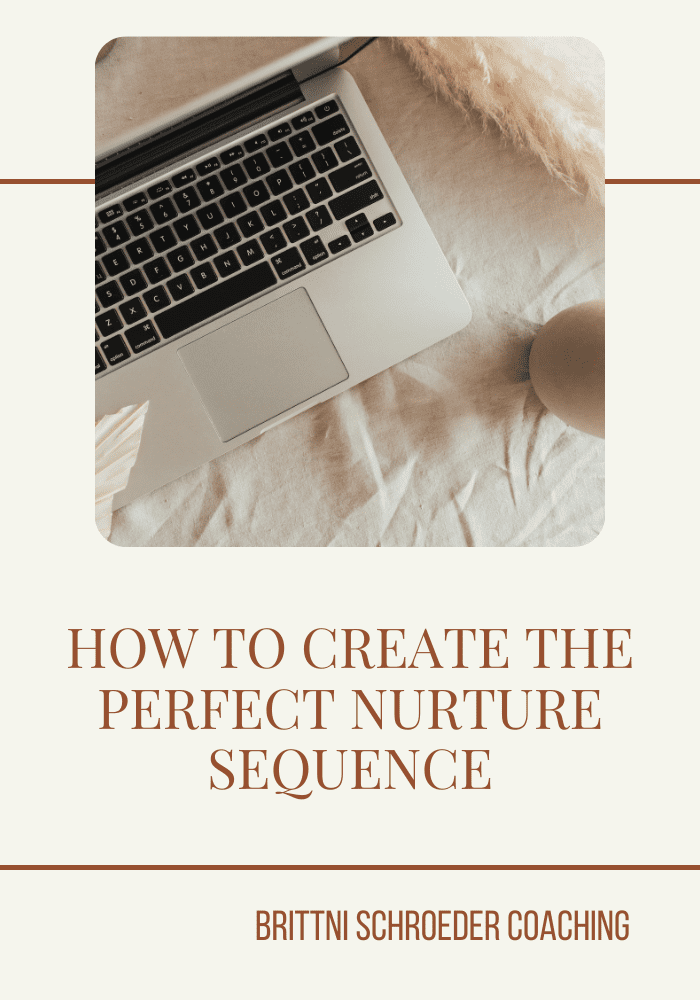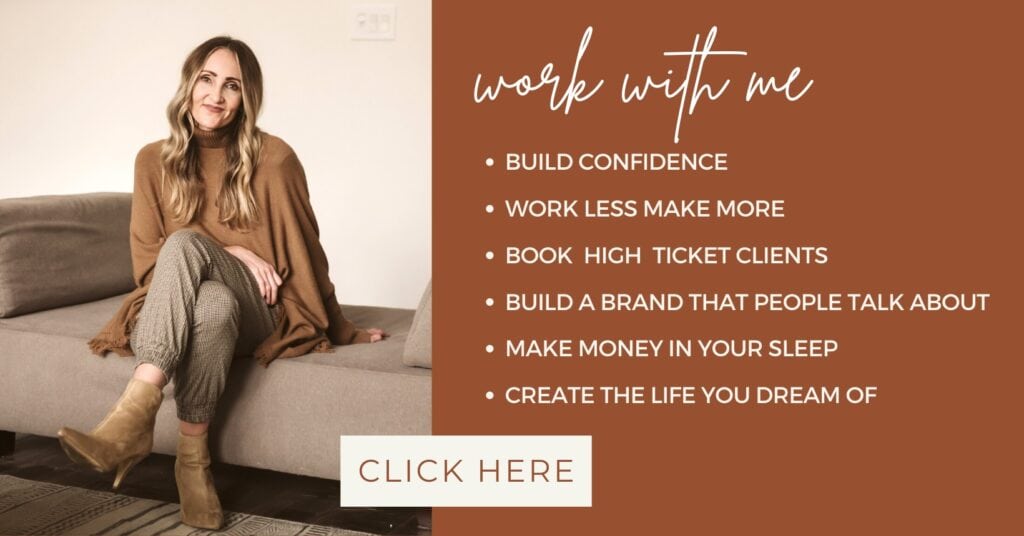brittni schroeder
BLOG
Brittni Schroeder Coaching
HOW TO CREATE THE
PERFECT NURTURE SEQUENCE

One of the most important things you can do for your business is create and grow a newsletter list. Your newsletter list is the only thing that you own. Every other marketing network is owned and controlled by someone else. Newsletters have been proven to be the best way to sell your services or products. If you don’t have one, that’s okay. Start today! There are several CRM (Customer Relations Managers) out there to choose from. I use Flodesk, but there are many equally great providers.
In order for your ideal client to give you their email, you need to offer something of value. This can come in the form of a free guide, webinar, value video, checklist, coupon code, etc. It has to be something they really want or need. Put some thought into what your ideal client would consider valuable.
Once you figure out what you’d like to offer and your potential client gives you their email, it is time to nurture your relationship with a series of emails otherwise known as a nurture sequence.
A nurture sequence is an automated series of emails that someone receives after they opt in to your email list. The objective is to build trust and confidence in you. This is your opportunity to show your potential clients your desire to willingness to serve them.
Your email nurture sequence should be at least 2-3 emails long, at the very least. The length can vary depending on what message you are trying to convey. Make sure each newsletter creates value. Don’t worry if people unsubscribe! You don’t want to waste your time on people who aren’t interested in what you have to offer. Those who unsubscribe are not your ideal clients.
WELCOME EMAIL
Your welcome email is the email subscribers receive instantly after signing up. This is typically the most opened email. This is the email that contains the freebie and value item they signed up for. Your welcome email is your opportunity for a first impression. This is the time to draw them in and make them want to learn more from you and what you have to offer. This is an opportunity to introduce yourself and position yourself as an expert in your field. Make sure that every email you send contains a Call To Action. Let me repeat: Every email needs a Call To Action.
For example, you ask them to follow you on Instagram or Facebook, read a blog post, subscribe to your podcast, reply, forward to a friend, etc.
FOLLOW-UP EMAIL
After you have written your welcome email, think about what you want to put in the follow-up emails. This is the time to get your audience to know, trust, and love you! You can send them follow-up emails about your freebie, links to your most popular blog posts, video content, coupon codes, or even another freebie.
Everyone is trying to simplify these days, you need to ensure your emails create value or your readers are more likely to unsubscribe. Remember to show your personality and treat your readers like they are your friends. Get into the all-I-want-to-do-is-help-my-clients mindset and let your emails reflect that.
OFFER E-MAIL
Ultimately, we want our subscribers to convert into customers, but be conscious about the right time to sell. Don’t try to sell them in every email. Your subscribers might be put off if you try to sell in your first, second, or third email. Make sure you have nurtured your relationships well before you ask.
Learn their language. Ask questions and really try to understand their needs. Ask questions like: “What are you struggling with at this moment?” Or, “If you could hire out one thing in your business or life right now what would it be?” These questions are great market research for how to improve your business.
When you feel like you have built trust and nurtured your relationship, then you will be ready to make your offer. Your offer might be a consultation, a coaching package, a service or an offer to purchase a product. What ever the offer may be make sure you are clean and concise with how they receive the offer. Use the button option or an obvious link.
AUTOMATE & TEST
When you have finished your nurture sequence, you’ll want to automate it. Most email marketing systems will have detailed instructions how to set this up. The most time-consuming part will be to write the newsletters. The set up should be pretty straight forward. After the setup is complete, you will need to do a test run. Ask a couple different people to test it for you—possibly someone who is your ideal client and someone who has a knack for grammar. Make sure every link, download, and redirect is working properly. Once that is finished—BAM!—you are ready to go!
